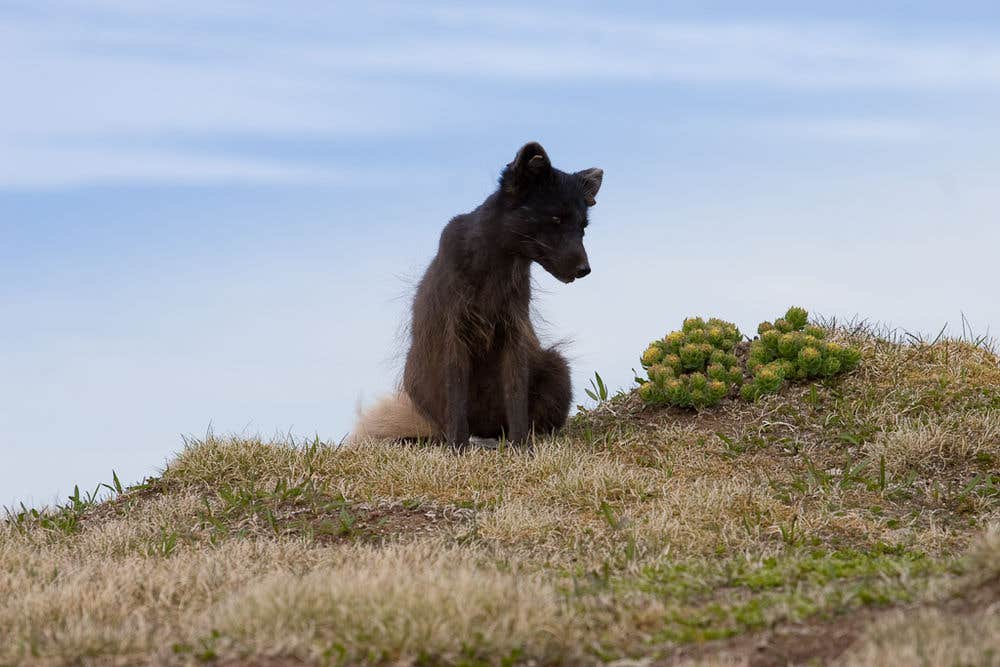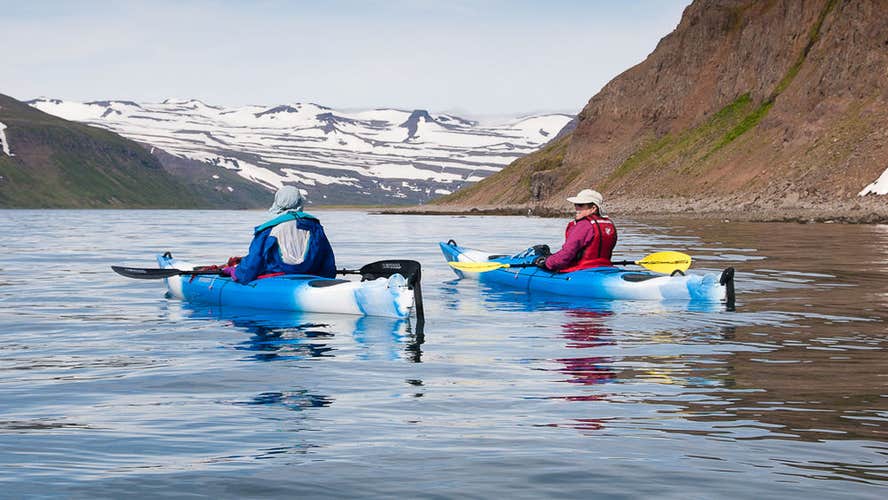Description
Summary
Description
Spend three days in the remote nature of the Westfjords, focussing on finding Arctic foxes under the midnight sun. Those eager to see native Icelandic wildlife, embark on various adventures, and enjoy the long daylight hours during summer in Iceland should book this small-group tour now.
The tour starts at the meeting point on the main street in Isafjordur. Here, you will meet the expert English-speaking guide and the other guests joining your trip.
This excursion is a small-group tour with a maximum of eight guests, so you'll have plenty of time to get to know each other in the coming days. You'll also have lots of opportunities to chat with your guide and ask any questions you have.
The group will travel out of Isafjordur by ferry across the Veidileysufjordur fjord to the Hornstrandir Nature Reserve. It's a beautiful fjord, and you may see humpback whales, puffins, and other seabirds along the way.
Upon landing, you'll start your hike to Kviar, an old farmhouse in the nature reserve that will be your accommodation during the tour. It's very peaceful here, with no other buildings for miles around.
You won't need to carry your luggage on the hike, as a porter will deliver it later. However, you should bring a daypack with snacks, water, and additional layers of clothing in case you get cold.
Hornstrandir is one of Iceland's least populated areas, having been abandoned by most of its inhabitants in 1948. Arctic foxes are the only remaining land mammals, and there are more here than in any other part of the country. Because they don't see people often, they are not scared of humans and make good photography subjects.
On each day of this tour, you'll set out to explore the incredible Hornstrandir Nature Reserve, making the most of the foxes, the rich bird and marine life, and stunning landscapes. You
Since your tour takes place during summer, you can enjoy extending hours of adventures under the midnight sun. The midnight sun in Iceland is a natural phenomenon in which the sun remains visible for 24 hours each day during the summer months.
It allows for unique experiences like late-night hiking, sightseeing, and photography. The constant daylight means you can make the most of Iceland's beautiful landscapes.
Don't miss this immersive three-day experience exploring the Westfjords of Iceland, finding Arctic foxes, and enjoying adventures under the midnight sun. Check availability now by choosing a date.
















